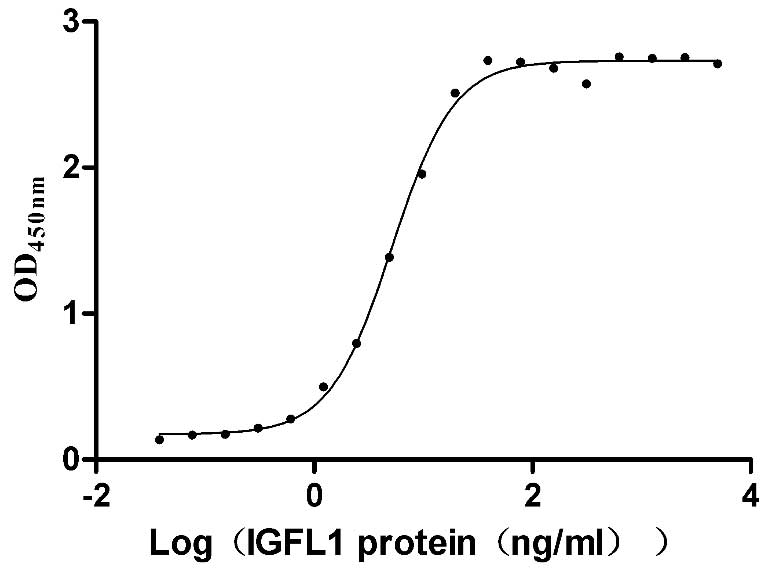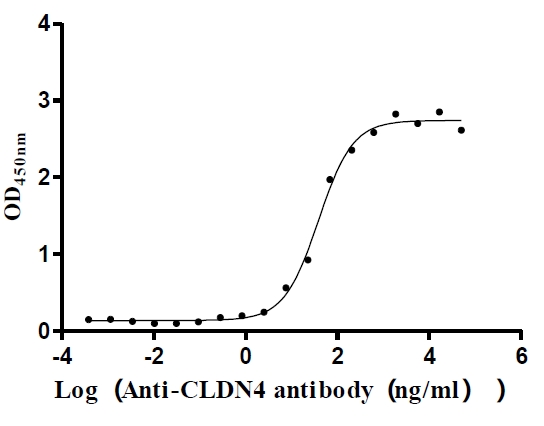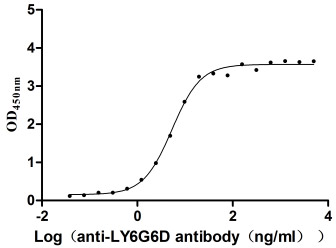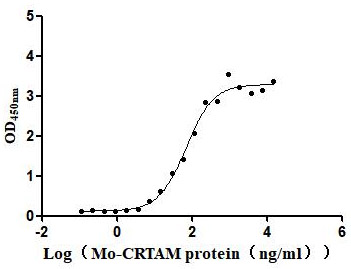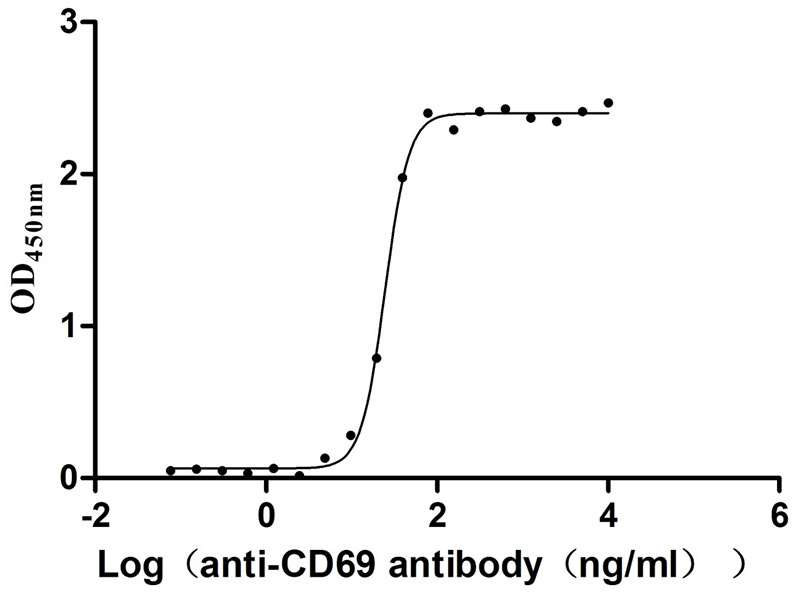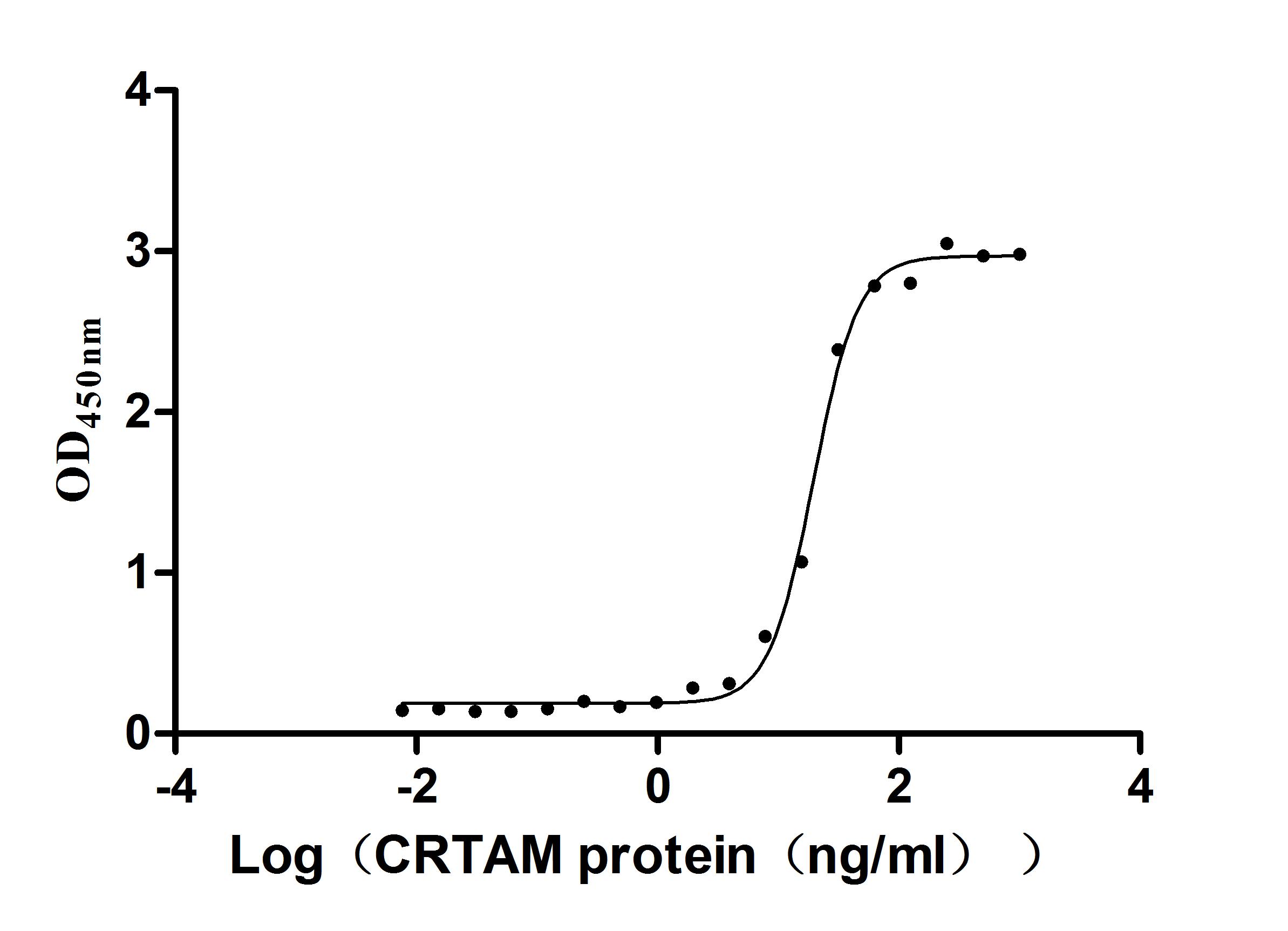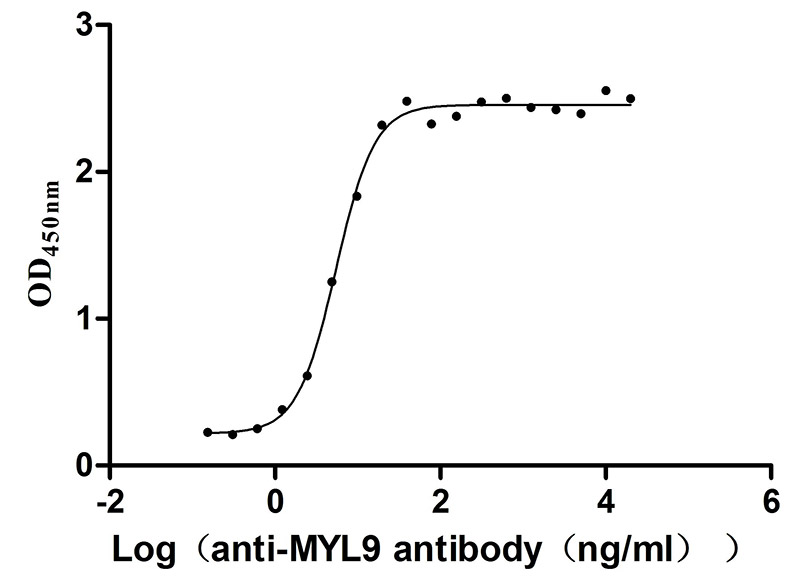Recombinant Nomascus leucogenys Tripartite motif-containing protein 5 (TRIM5)
-
中文名稱:Recombinant Nomascus leucogenys Tripartite motif-containing protein 5(TRIM5)
-
貨號:CSB-YP623333NHM
-
規(guī)格:
-
來源:Yeast
-
其他:
-
中文名稱:Recombinant Nomascus leucogenys Tripartite motif-containing protein 5(TRIM5)
-
貨號:CSB-EP623333NHM
-
規(guī)格:
-
來源:E.coli
-
其他:
-
中文名稱:Recombinant Nomascus leucogenys Tripartite motif-containing protein 5(TRIM5)
-
貨號:CSB-EP623333NHM-B
-
規(guī)格:
-
來源:E.coli
-
共軛:Avi-tag Biotinylated
E. coli biotin ligase (BirA) is highly specific in covalently attaching biotin to the 15 amino acid AviTag peptide. This recombinant protein was biotinylated in vivo by AviTag-BirA technology, which method is BriA catalyzes amide linkage between the biotin and the specific lysine of the AviTag.
-
其他:
-
中文名稱:Recombinant Nomascus leucogenys Tripartite motif-containing protein 5(TRIM5)
-
貨號:CSB-BP623333NHM
-
規(guī)格:
-
來源:Baculovirus
-
其他:
-
中文名稱:Recombinant Nomascus leucogenys Tripartite motif-containing protein 5(TRIM5)
-
貨號:CSB-MP623333NHM
-
規(guī)格:
-
來源:Mammalian cell
-
其他:
產(chǎn)品詳情
-
純度:>85% (SDS-PAGE)
-
基因名:TRIM5
-
Uniprot No.:
-
別名:TRIM5; Tripartite motif-containing protein 5; EC 2.3.2.27; RING-type E3 ubiquitin transferase TRIM5; TRIM5alpha
-
種屬:Nomascus leucogenys (Northern white-cheeked gibbon) (Hylobates leucogenys)
-
蛋白長度:full length protein
-
表達(dá)區(qū)域:1-494
-
氨基酸序列MASGILVNVK EEVTCPICLE LLTQPLSLDC GHSFCQACLT ANHKTSMPDE GERSCPVCRI SYQHKNIQPN RHVANIVEKL REVKLSPEEG QKVDHCARHG EKLLLFCRED RKVICWLCER SQEHRGHHTF LTEEVAQEYQ VKLQAALQML RQKQQEAEEL EADIREEKAS WKTQIQYDKT NILADFEQLR HILDWVESNE LQNLEKEEKD VLKRLMKSEI EMVQQTQSVR ELISDLEHRL QGSVMELLQG VDGVIKRMKN VTLKNPETFP KNQRRVFRAA DLKVMLKKLR ELRDVQHYWV DVTVAPNNIS YAVISEDMRQ VSSPEPQIIY EAQGTISQTF VNFNYCTGIR GSQSITSGKH YWEVDVSKKS AWILGVCAGF QPDAMYNIEQ NENYQPKYGY WVIGLEERVK CNAFQDGSFH TPSAPFIVPL SVNICPDRVG VFLDYEACTL SFFNITNHGF LIYKFSHCSF SQPVFPYLNP RKCTVPMTLC SPSS
-
蛋白標(biāo)簽:Tag?type?will?be?determined?during?the?manufacturing?process.
The tag type will be determined during production process. If you have specified tag type, please tell us and we will develop the specified tag preferentially. -
產(chǎn)品提供形式:Lyophilized powder
Note: We will preferentially ship the format that we have in stock, however, if you have any special requirement for the format, please remark your requirement when placing the order, we will prepare according to your demand. -
復(fù)溶:We recommend that this vial be briefly centrifuged prior to opening to bring the contents to the bottom. Please reconstitute protein in deionized sterile water to a concentration of 0.1-1.0 mg/mL.We recommend to add 5-50% of glycerol (final concentration) and aliquot for long-term storage at -20℃/-80℃. Our default final concentration of glycerol is 50%. Customers could use it as reference.
-
儲(chǔ)存條件:Store at -20°C/-80°C upon receipt, aliquoting is necessary for mutiple use. Avoid repeated freeze-thaw cycles.
-
保質(zhì)期:The shelf life is related to many factors, storage state, buffer ingredients, storage temperature and the stability of the protein itself.
Generally, the shelf life of liquid form is 6 months at -20°C/-80°C. The shelf life of lyophilized form is 12 months at -20°C/-80°C. -
貨期:Delivery time may differ from different purchasing way or location, please kindly consult your local distributors for specific delivery time.Note: All of our proteins are default shipped with normal blue ice packs, if you request to ship with dry ice, please communicate with us in advance and extra fees will be charged.
-
注意事項(xiàng):Repeated freezing and thawing is not recommended. Store working aliquots at 4°C for up to one week.
-
Datasheet :Please contact us to get it.
靶點(diǎn)詳情
-
功能:Capsid-specific restriction factor that prevents infection from non-host-adapted retroviruses. Blocks viral replication early in the life cycle, after viral entry but before reverse transcription. In addition to acting as a capsid-specific restriction factor, also acts as a pattern recognition receptor that activates innate immune signaling in response to the retroviral capsid lattice. Binding to the viral capsid triggers its E3 ubiquitin ligase activity, and in concert with the heterodimeric ubiquitin conjugating enzyme complex UBE2V1-UBE2N (also known as UBC13-UEV1A complex) generates 'Lys-63'-linked polyubiquitin chains, which in turn are catalysts in the autophosphorylation of the MAP3K7/TAK1 complex (includes TAK1, TAB2, and TAB3). Activation of the MAP3K7/TAK1 complex by autophosphorylation results in the induction and expression of NF-kappa-B and MAPK-responsive inflammatory genes, thereby leading to an innate immune response in the infected cell. Plays a role in regulating autophagy through activation of autophagy regulator BECN1 by causing its dissociation from its inhibitors BCL2 and TAB2.
-
亞細(xì)胞定位:Cytoplasm. Nucleus.
-
蛋白家族:TRIM/RBCC family
Most popular with customers
-
Recombinant Human Tumor necrosis factor receptor superfamily member 14 (TNFRSF14), partial (Active)
Express system: Mammalian cell
Species: Homo sapiens (Human)
-
Recombinant Human IGF-like family receptor 1 (IGFLR1), partial (Active)
Express system: Mammalian cell
Species: Homo sapiens (Human)
-
Recombinant Human Claudin-4 (CLDN4)-VLPs (Active)
Express system: Mammalian cell
Species: Homo sapiens (Human)
-
Recombinant Macaca fascicularis lymphocyte antigen 6 family member G6D (LY6G6D) (Active)
Express system: Yeast
Species: Macaca fascicularis (Crab-eating macaque) (Cynomolgus monkey)
-
Recombinant Mouse Cell adhesion molecule 1 (Cadm1), partial (Active)
Express system: Mammalian cell
Species: Mus musculus (Mouse)
-
Recombinant Human Early activation antigen CD69 (CD69), partial (Active)
Express system: Mammalian cell
Species: Homo sapiens (Human)
-
Recombinant Human Cell adhesion molecule 1 (CADM1), partial (Active)
Express system: Mammalian cell
Species: Homo sapiens (Human)
-
Recombinant Human Myosin regulatory light polypeptide 9 (MYL9) (Active)
Express system: Yeast
Species: Homo sapiens (Human)



